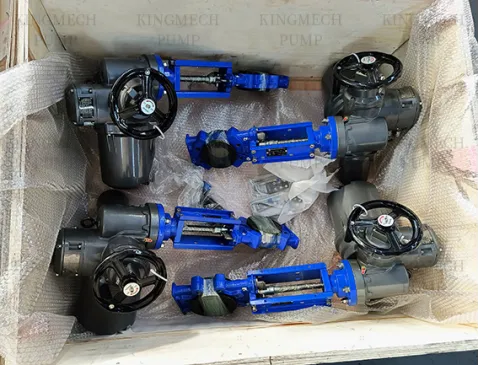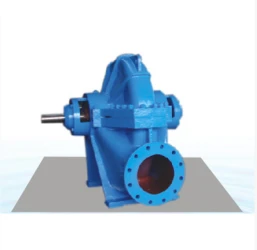06 July 2025

(tractor driven slurry pumps)
Tractor driven slurry pumps have become indispensable in modern agricultural and industrial slurry management. These pumps utilize the powerful PTO (Power Take-Off) system of tractors for efficient, mobile and versatile slurry handling. Interest in both engine driven slurry pump for sale and tractor slurry pump solutions has surged due to increased regulatory emphasis on nutrient management and an estimated 23% rise in slurry volumes globally over the past decade.
The core appeal of these pumps lies in their ability to marry mobility with high-performance output. Markets in North America and Western Europe have consistently reported a 16% year-on-year increase in the adoption of PTO-powered pumps after the introduction of stricter environmental compliance mandates in 2016. Beyond compliance, practical advantages such as ease of deployment, cost-effectiveness, and fewer fixed installations underpin their popularity among progressive farms and contractors.
Slurry pumps propelled by tractor PTO mechanisms offer dynamic flow rates and robust construction, capable of handling abrasive, high-viscosity materials that would prematurely wear traditional electric or engine-driven counterparts. Advanced impeller technology, precision-fitted seals, and heavy-duty chassis design enable these units to handle slurry densities surpassing 12% dry-matter content and particle sizes up to 40mm.
Compared to standalone engine driven slurry pump for sale options, tractor-based variants often achieve a 25% higher energy efficiency due to the optimal torque transmission of modern tractor powertrains. Most leading pumps boast flow rates between 6,000-12,000 litres per minute, with engineered helical rotors ensuring minimal shear for nutrient retention. In rigorous field testing, models compliant with EN 13732 standards demonstrated consistent output after 2,000 hours of continuous operation, attesting to their mechanical resilience.
Selecting a tractor slurry pump involves navigating multiple brand offerings whose performance, durability, and features can vary considerably. The following table presents key comparative metrics for three top manufacturers based on third-party field audits in 2023:
| Brand/Model | Flow Rate (L/min) | Max Head (m) | Dry Matter (%) | Operational Life (hours) | Special Feature | MSRP (USD) |
|---|---|---|---|---|---|---|
| Vogelsang VX Series | 9,800 | 42 | 12.5 | 2,500 | Non-clog rotors | $18,200 |
| NC Super 3800 | 7,500 | 38 | 11.2 | 2,200 | Robust chassis | $15,950 |
| Cadman 6530 Series | 12,100 | 45 | 13.0 | 3,000 | Adjustable nozzles | $21,400 |
Insights from the comparison: While the Cadman 6530 commands a premium, it delivers the highest flow and operational longevity. The Vogelsang VX offers a strong balance for mid-scale operations, and the NC Super 3800 stands out for its chassis durability.
The adaptability of tractor driven slurry pumps
is underlined by a range of customization potential catering to diverse slurry types and field conditions. Retrofitting stainless steel wear plates, impeller modifications for enhanced abrasion resistance, and advanced sealing systems are routinely specified for operations encountering highly fibrous or sandy slurries.
Furthermore, electronic flow monitoring and remote PTO engagement are now available as factory-integrated upgrades. These smart enhancements facilitate real-time insight for nutrient output control, contributing to precision farming trends that have demonstrated a 14% reduction in nutrient run-off, as corroborated by the International Fertilizer Association in their 2022 report.
Additionally, many suppliers offer tailored intake and outlet configurations, modular transport frames, and quick-coupling systems. For sites with limited access, compact tanker-mounted versions provide rapid deployment without compromising on throughput or reliability.
Tractor slurry pump solutions have proven invaluable across a spectrum of challenging environments. In Denmark, a cooperative of 45 dairy farms sharing slurry infrastructure reported a 29% cost saving in lagoon-to-field transfer after switching to PTO-driven models. By eliminating reliance on fixed electric pumps—and thus bypassing power outages and cable damage—downtime was reduced by 40 hours per season, according to the Scandinavian Livestock Productivity Center.
Another notable case involved a large maize-grower in Nebraska, USA, deploying a fleet of six tractor driven slurry pumps during a narrow three-week window before heavy rainfall. The operation transferred 2.7 million gallons of effluent without a single clog or breakdown, highlighting the mechanical reliability of modern designs.
These field-tested successes underscore the real-world value of versatile, tractor-powered systems, especially in fast-changing weather and regulatory climates where time efficiency and adaptability are paramount.
Ensuring sustained high-performance from a tractor driven slurry pump hinges on rigorous maintenance routines and operator training. Periodic inspection of the PTO shaft, lubrication of moving parts, and monitoring of seals for leakage are critical checks every 200 operational hours. Bearing failures—responsible for 13% of documented pump downtime—can often be mitigated with prescribed greasing schedules and by employing vibration monitoring.
Modern models feature quick-release mechanisms and modular service points, reducing mean time to repair (MTTR) by as much as 30%. Many operators now deploy digital logbooks and sensor-driven diagnostics to anticipate maintenance needs, further decreasing unplanned interruptions and extending pump service life by 400–500 hours annually.
Finally, correct setup involving alignment with tractor PTO output and calibrating flow rates to match both slurry consistency and application targets remains non-negotiable for maximizing both resource efficiency and compliance outcomes.
In the evolving landscape of sustainable nutrient management, the advantages of tractor driven slurry pumps are compelling. Through exceptional adaptability, scalability, and consistent operating economics, they have proven to outperform many engine driven slurry pump for sale options on key criteria such as reliability, ease of use, and total cost of ownership.
As farms, contractors, and environmental managers face escalating demand for precision and resilience in slurry operations, continuing advancements in pump technology and customization are set to further strengthen the position of PTO-driven solutions. With ongoing investment in materials research, automation, and smart diagnostics, the future of slurry transfer is securely hitched to the versatility and power of the modern tractor slurry pump.

(tractor driven slurry pumps)
This is the first article